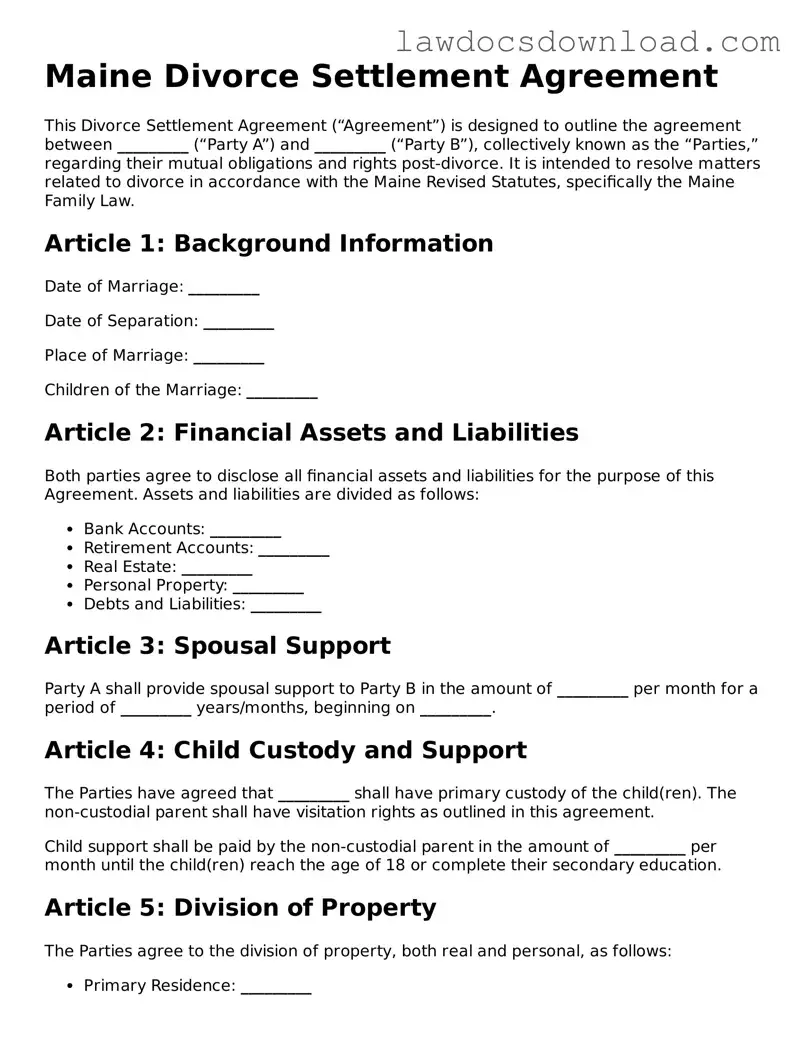Maine Divorce Settlement Agreement
This Divorce Settlement Agreement (“Agreement”) is designed to outline the agreement between _________ (“Party A”) and _________ (“Party B”), collectively known as the “Parties,” regarding their mutual obligations and rights post-divorce. It is intended to resolve matters related to divorce in accordance with the Maine Revised Statutes, specifically the Maine Family Law.
Article 1: Background Information
Date of Marriage: _________
Date of Separation: _________
Place of Marriage: _________
Children of the Marriage: _________
Article 2: Financial Assets and Liabilities
Both parties agree to disclose all financial assets and liabilities for the purpose of this Agreement. Assets and liabilities are divided as follows:
- Bank Accounts: _________
- Retirement Accounts: _________
- Real Estate: _________
- Personal Property: _________
- Debts and Liabilities: _________
Article 3: Spousal Support
Party A shall provide spousal support to Party B in the amount of _________ per month for a period of _________ years/months, beginning on _________.
Article 4: Child Custody and Support
The Parties have agreed that _________ shall have primary custody of the child(ren). The non-custodial parent shall have visitation rights as outlined in this agreement.
Child support shall be paid by the non-custodial parent in the amount of _________ per month until the child(ren) reach the age of 18 or complete their secondary education.
Article 5: Division of Property
The Parties agree to the division of property, both real and personal, as follows:
- Primary Residence: _________
- Vehicles: _________
- Furniture and Household Items: _________
- Jewelry and Collectibles: _________
- Other Assets: _________
Article 6: Debts
The Parties are responsible for the following debts:
- Mortgage: _________ by _________
- Personal Loans: _________ by _________
- Credit Cards: _________ by _________
- Other Liabilities: _________ by _________
Article 7: Miscellaneous
This Agreement contains the entire agreement between the Parties. Any amendments or changes to this agreement must be made in writing and signed by both Parties.
Article 8: Governing Law
This Agreement shall be governed in accordance with the laws of the State of Maine.
Signatures
Party A: ___________________________ Date: ________
Party B: ___________________________ Date: ________
Witness: ___________________________ Date: ________
